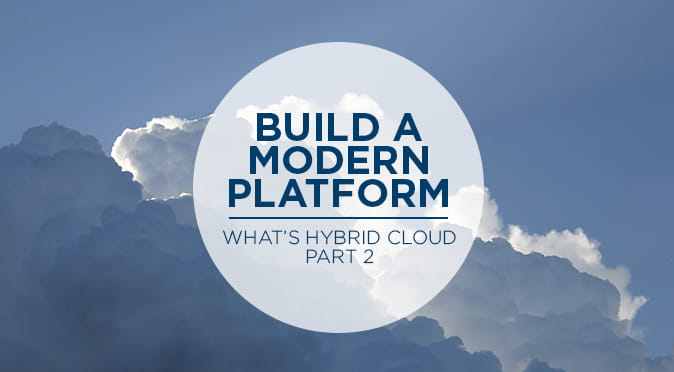
March 21, 2018 | InBrief
What's hybrid cloud, part 2
What's hybrid cloud, part 2
We see 6 major aspects of hybrid cloud that IT organizations leveraging cloud technologies need to consider:
-
Connectivity
-
Identity
-
Security
-
Monitoring
-
Automation
-
Workload Mobility
In Part 1 of this series we reviewed some considerations for adopting a hybrid cloud hosting model, including aspects of connectivity, identity, and security. This blog will cover additional hybrid cloud dimensions, including monitoring, automation, and workload extension.
Monitoring: Monitoring your infrastructure and applications is a critical part of a successful cloud hosting environment Making the correct operational and architectural changes as a cloud infrastructure matures depends on comprehensive and accurate information about all levels of the application stack. This information is courtesy of a comprehensive performance and availability monitoring structure.
We typically see a wide range of existing monitoring solutions deployed by our clients. Unfortunately, these implementations can be incomplete for various reasons, leaving some functionality gaps that need to be filled as part of the cloud deployment. Additionally, many existing "on-premises" monitoring systems simply do not have the functionality required to monitor public cloud infrastructure deployments and hosted applications.
Plan to at least augment and potentially replace the existing performance and availability monitoring solution with one that works across both cloud and on-prem infrastructures. Having a common system will provide not only modern functionality, but also ease troubleshooting when working with application layers that are hosted in across multiple platforms. Additionally, selection and deployment of a SaaS-based monitoring solution will greatly shorten the time necessary for deployment.
Automation: Deploying your cloud hosting platform using a scripted, source controlled deployment model provides several important benefits, especially in larger environments. Executing this infrastructure as code approach requires deployment and configuration automation tools. While each cloud vendor provides "native" tools, these typically don't extend to manage other cloud providers or on-prem infrastructure systems.
Many offerings are available in this space, including open source and commercially-supported products (Chef, Puppet, Ansible, others). Begin with a thorough evaluation of functionality requirements. Determine desired support for procedural or declarative code, cloud and operating environments to be deployed, reporting/compliance functionality, and integrations across the hybrid cloud infrastructure stack. As many of these solutions are available as SaaS products, strongly consider deploying proof of concept environment to evaluate functionality and the impact of the tool(s) with your infrastructure development and deployment processes.
Consider leveraging existing systems used by your software developers, including source code repositories and CI/CD frameworks. Using toolsets that are a company standard can decrease the time required to deploy the solution, while providing available "in-house" expertise.
Workload Extension: A hybrid cloud hosting model ultimately could involve flexibly migrating workloads to and from its on-prem and public cloud segments. True live migration functionality is now available from the VMWare on AWS offering, and several other 3rd party services provide transportation of workloads between platforms, with some caveats. Several storage-related offerings are available for linking on-prem and cloud storage systems, either as standalone systems (AWS Storage Gateway), or support for cloud provider APIs built into other products. These capabilities work best however for infrequent access or longer-term storage tier use cases.
Data backup software vendors have led the way in extending their native data copy and transport functionality to public cloud provider targets. Vendors are leveraging additional functionality to create cloud provider-native virtual machines from the copied virtual machine data. This results in server workloads migrated between platforms, typically with minimum additional virtual machine configuration required.
Various host-based replication software packages provide real-time replication of virtual machine data between your hybrid cloud environments. Several of these offerings are "provider neutral", supporting many cloud provider platforms as long as the virtual machine operating system is supported. When considering your hybrid cloud, fully consider all of your requirements for cross-platform management, security, and workload mobility. We look forward to discussing your technical options and working with you to optimize your hybrid cloud design.
Contact us and let’s discuss your cloud challenges – and check back regularly for more updates around our cloud advisory services.

